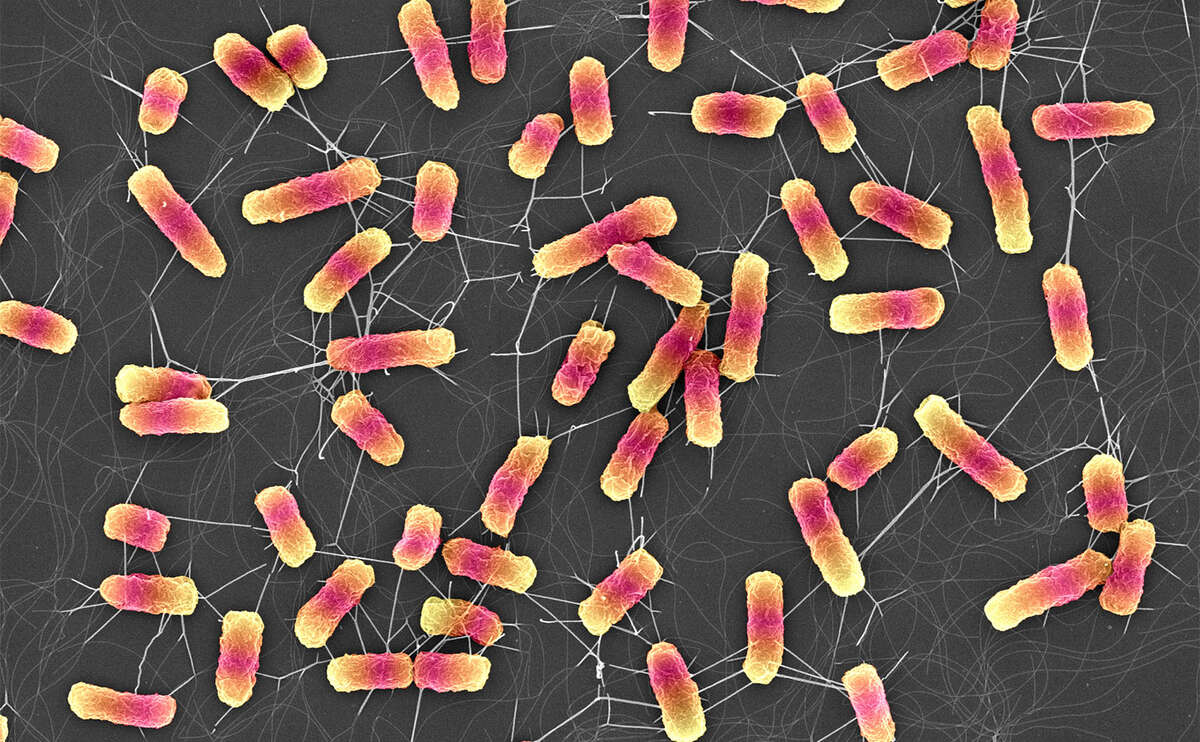Prof. Médéric Diard on social interactions in bacterial communities
To live at the expense of others is harmful to the common welfare. This is also true for the simplest of organisms − bacteria. Therefore, strategies have been developed to keep those who cheat under control.
Is there a kind of social behavior among bacteria?
Yes indeed, bacteria also depend on a well-functioning “society”. As a community, they are better able to resist stress or challenging living conditions, such as attacks by the host’s immune system or antibiotic treatments. For example, the enteropathogenic bacterium Salmonella Typhimurium: Once this bug has successfully colonized the gut, it can cause severe and life-threatening diarrhea in humans. So, when we discovered that these pathogens tend to lose their virulence during growth in the intestine you can imagine we were very much surprised.
At first glance, this does not seem to be a good survival strategy.
That’s true. However, the evolution of Salmonella in the gut is short-sighted. The fastest growing mutants will win the competition, whatever the consequences. The production of virulence factors is associated with much lower growth rates. This means it is a huge cost for the bacteria to trigger the infection, and this supports a tendency for mutants to evolve that have completely lost the ability to express these virulence factors. We call these mutants “cheaters”. They can grow rapidly because they profit from the welfare of the community without paying the cost.
How can the community protect itself from these cheats?
The non-virulent cheaters outcompete the virulent clones, leading to instability of the whole population of Salmonella in the gut. This would mean disaster for the community if the virulent pathogens had not evolved a solution to deal with these invaders. So, indeed, the emergence of cheaters raised the question of how Salmonella can exist as a virulent bug. What we observed is that Salmonella cultivates the division of labor.
In what way?
If you look at a Salmonella population in a natural environment, you will find two different phenotypes: the “on-cell” that expresses virulence factors and the “off-cell” that does not. In contrast to the “locked-off” cheaters, these two types can epigenetically switch from one to the other. In a normal population, we have virulent but slow-growing on-cells and fast-growing non-virulent off-cells.
What is the advantage for the bacteria to exhibit different behavior?
The job of the on-cells is to get rid of the gut microbiota by inducing inflammation and thus construct a niche. However, a population with many on-cells also promotes the emergence of the constantly “locked-off” cheaters. Once these cheaters have squeezed out their virulent competitors, the innate immune system stops inflammation and the microbiota restarts growth. Salmonella loses, because it can’t colonize the gut without inflammation. The job of the off-cells, therefore, seems to be to compete with the arising cheaters and to protect the niche. These off-cells could be very important for the transmission of virulent Salmonella. I think that the division of labor is crucial for the survival of the whole population and maintaining virulence in Salmonella.
How can your research help find novel strategies to fight bacterial infections?
Approaches that aim to kill or to inhibit the growth of pathogens tend to push the evolution toward emergence of resistance. That’s why we now have to look for new drugs, or other killing agents like bacteriophages, as we do in my group. However, it also means that we must think about preventive strategies. The point is, if we know how and why pathogens evolve and how to disrupt “social” interactions and what sustains the structures of bacterial communities, we could be one step ahead. In the case of Salmonella, this means that we could create a beneficial environment for the harmless cheaters and thus protect the host from colonization by virulent bacteria. That’s classical biocontrol – you keep the niche occupied by something you can manage. This may not be a total protection of one host, but you could break the transmission chain and therefore reduce the use of antibiotics and the emergence of resistance.



